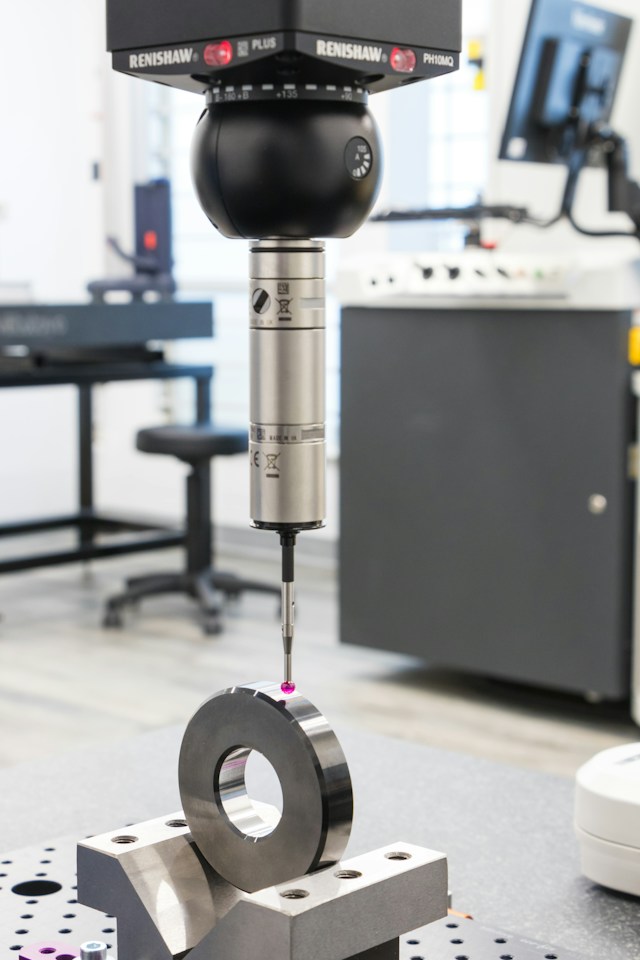
Everything You Need to Know on Custom Machining
When equipment requires parts that don’t exist in the manufacturer’s catalog, custom machining is the answer. This process utilizes various manufacturing techniques, such as CNC milling and turning, to create unique, made-to-order components that meet a specific purpose.
Machined production parts often feature finer tolerances than molded parts and are more robust. They also help maximize human resources and minimize the waste of raw materials.
What is CNC machining?
CNC machining is the process of cutting prototype parts using computer-controlled machines. Engineers use Computer-Aided Design (CAD) software to create a 3D model of the final part, and then the machine uses that file to cut the actual metal parts.
The machines can also use CNC milling, a popular manufacturing process that involves turning and drilling metals. These machines can cut almost any metal alloy or rigid plastic, making them a valuable tool for many industries.
For companies that need to produce products that don’t exist elsewhere, custom machining is a necessity. This process allows companies to focus on innovating and designing products that will differentiate them from their competition. Working with a reliable and professional custom machining company will also free up in-house resources, maximizing employee productivity and minimizing wasted materials. This is particularly important as the labor shortage continues to affect many industries. This includes the manufacturing industry, where it takes more work to hire skilled workers.
Benefits of CNC Machining
In addition to its superior precision and accuracy, custom machining saves a business recurring operational costs. With labor shortages causing businesses to do more with fewer people, the machine-run production process helps maximize human resources by removing tasks that don’t add value. It also reduces material waste and energy consumption, offloading these recurring expenses from your business.
This prototype development technique is precious in industries that require parts to be made to exact specifications, such as aerospace and medical devices. These kinds of projects are often only possible with traditional manufacturing methods such as 3D printing, vacuum casting, or rapid injection molding, which are limited in the materials they can use.
Unlike alternatives to CNC machining, which can be time-consuming and susceptible to human error, these machines produce identical results every single time. However, you need to work with a company that acknowledges mistakes when they occur so they can correct them and improve the process in the future.
Why do I need CNC machining?
There are times when equipment requires unique parts to fit into the manufacturer’s catalog. Custom machining allows for creation of these particular parts and products promptly to keep production going.
These projects often have tight tolerances that must be met for the final product to work. Traditional methods like 3D printing and mold casting leave room for error, while CNC machining creates highly accurate, vital, and durable metal and plastic parts with consistency across multiple iterations.
CNC machining also decreases the demand for human labor, which is particularly significant given the current labor shortage. This enables companies to maximize the use of their employees in more productive activities and minimizes the waste of raw materials. This translates to higher employee productivity and decreased expenses in the long run. The process can also be completed more quickly than traditional manufacturing processes. This makes it the best choice for projects with a limited time frame.
Process of CNC Machining
Unlike other manufacturing processes like molding and 3D printing, which use chemical methods to create parts, CNC machined parts are made from solid material blocks. This makes them more robust, durable, and accurate than molded or injected plastic parts.
To create a CNC machined part, engineers develop a blueprint of the desired shape. This is then turned into a digital two- or three-dimensional model using a computer-aided design (CAD) program.
The CAD file is then used to guide the CNC machine tools as they cut away the block of material. This process can take a few seconds to many hours, depending on the part size and complexity. The ultimate result is a high-quality, precise part that fulfills the project’s specifications. The medical industry, for example, relies on custom CNC machining to produce complex components for disposable devices that protect patients from infections. This technology is also helpful in the aerospace industry, which requires very tight tolerances and materials that do not work well with other manufacturing methods.



